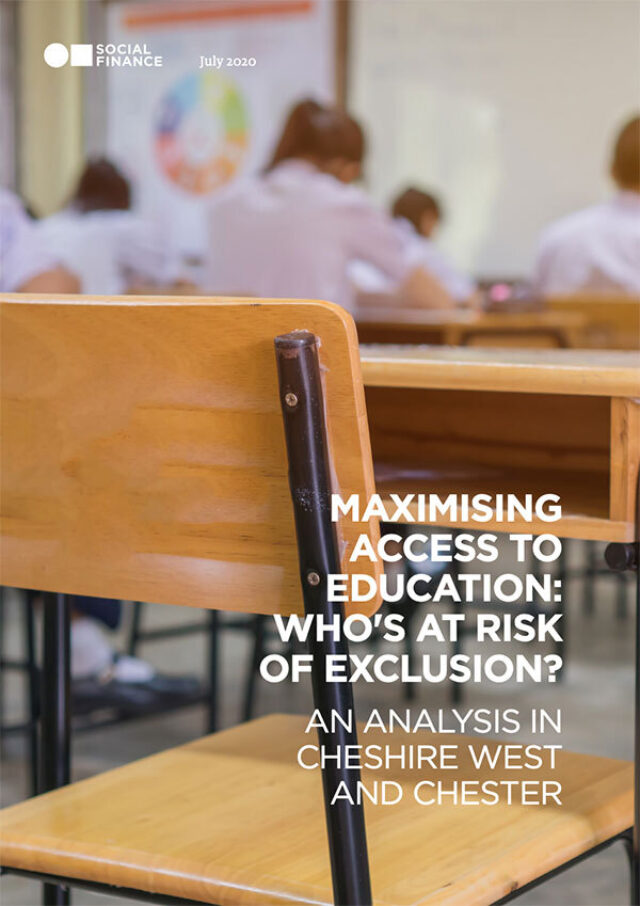Who's at risk of exclusion? An analysis in Cheshire West and Chester
Our new report, in partnership with Cheshire West and Chester Council and foundations, reveals a possible blind spot in national exclusion statistics: girls are less likely to be formally excluded (fixed term or permanent) but more likely to experience ‘informal’ exclusions such as early exits or school changes.
Pupils who experience school exclusion are over-represented in groups with low attainment of GCSEs, those Not in Education, Employment or Training (NEET), those exploited through county lines and those in prison. It is a complex systemic issue that goes beyond education and disproportionately affects a small group of vulnerable and disadvantaged pupils.
Key findings from this report include:
- Girls more likely to experience some forms of informal exclusions, which means they are ‘invisible’ in official exclusions data
- Pupils with experience of social care more likely to experience all forms of exclusion and four-five times more likely to be persistently absent in particular
- 15% of vulnerable children experience 58% of multiple fixed term exclusions
- Pupils with Special Education Needs eight times more likely to be permanently excluded
- Pupils with SEMH needs were more likely to receive all forms of exclusion (permanent, fixed-term, school move, managed move, early exit and persistent absence)
- Persistence absenteeism (more than 10%) increases before exclusion (PEx, FTE or school move) and does not reduce after it. Average absenteeism 5%.
- In the highest excluding schools, more than 10% of pupils receive two or more fixed-term exclusions
- Lack of financial support for pupils who do not meet thresholds is creating perverse incentives to exclude vulnerable children. Excluded pupils are putting pressure on Local Authority budgets – costs could be saved if pupils are given the support they need earlier
The report presents key recommendations on how to address these challenges for foundations, local government and national government, including:
- Applying a more comprehensive definition of exclusion across local and national government, and non-statutory actors working in exclusions
- Changes to Government data collection on exclusions to mitigate gender bias
- Government investment in multi-agency preventative interventions for vulnerable pupils (locally and nationally)
- More partnerships between councils and foundations to support vulnerable pupils who aren’t getting the support they need
- Proactive support for schools under the most pressure due to high thresholds, squeezed budgets and performance tables
Sara Parsonage, Associate Director at Social Finance thinks that “nationally, we need to use data to look beyond only formal exclusions. Otherwise, we risk keeping girls ‘invisible’ in our data and in our responses. We cannot allow gender bias to prevent girls from getting the vital support they need. This partnership between foundations, the council and Social Finance has made this issue visible and shown the value of bringing together statutory services, non-statutory actors and data to help identify the children who aren’t getting the support they need.”
“The findings of this report will be instrumental in re-modelling pathways, systems and support around school exclusions in west Cheshire as we work together to ensure that children and young people get the support they need to achieve their best” says Councillor Bob Cernik, Cabinet Member for Children and Families at Cheshire West and Chester Council.
We are grateful to Cheshire West and Chester Council for their proactive partnership, as well as their openness and willingness to share learnings to further a collective understanding of this national issue.
“It’s highly likely that this will be an issue in other local authority areas and we hope that sharing our findings will help other councils target support better to children most at risk of being excluded after lockdown. In west Cheshire we understand how damaging exclusion can be for children and young people, their families and carers, and how this can have a long-term impact for everyone involved. Although our exclusion rates are below the national average, we wanted to challenge ourselves to really understand which pupils are most at risk and how we can better support them.” Councillor Bob Cernik, Cabinet Member for Children and Families at Cheshire West and Chester Council.
This report is part of a broader programme at Social Finance called Maximising Access to Education. We are working with two local authorities, Gloucestershire County Council and Cheshire West and Chester, to develop a response to school exclusions rooted in local context. We’re now working across both areas to co-produce the necessary local infrastructure and evidence-based interventions to respond to rising exclusions. Simultaneously, we’re working to capture and disseminate cross-cutting learnings from both areas, with a view to scaling nationally in the longer-term.
